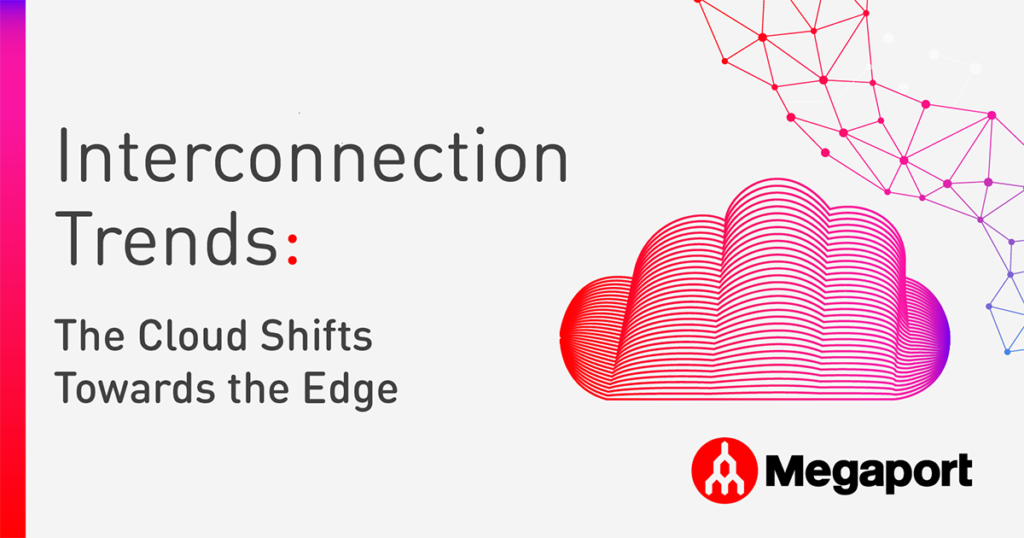
How Scalable Connectivity Improves Business Agility
- Cloud networking
- February 28, 2019
- RSS Feed
Building a cloud or data transport strategy? Here’s how scalable connectivity could significantly improve the process – and your overall business agility.
From everyday operations to key projects, an enterprise’s need to move workloads constantly fluctuates depending on the changing demands of the organisation. Whether it’s between physical infrastructure in data centres or to the cloud, or both, transferring data should be a quick and easy process–especially considering the competitive digital landscape that’s become a reality for enterprises across most verticals.
Unfortunately, that so-called ‘quick and easy process’ often falls short of what most organisations should expect. This is most often due to the choices enterprises make when connecting their environments which should be considered carefully. For example, using the public internet to transfer business-critical data can be a frustrating process to say the least because of its lack of reliability, security, and cost-effectiveness.
So, how can enterprises ensure they’re making the best choice when it comes to point-to-point or cloud connectivity? If you want to take a deeper look at evaluating your options, take a read of our blog post here.
One of the main considerations that should be top of mind is making sure your network connectivity aligns with the changing needs of your business. If business agility is key in this digital era, then implementing an agile network should be a major part of your strategy.
Scalable connectivity (and the power to dial bandwidth speeds up and down) plays a big part in network agility–and could be the solution your business needs. With the ability to match data rates to workload demand, it gives you more control and flexibility over your usage and truly aligns to the way your company operates while enabling you to negate any unnecessary costs for bandwidth you don’t need.
Our customers have found that there are many different practical ways to use scalable connectivity to their advantage while provisioning on the Megaport Network. Below is a rundown of use cases for you to consider.
Use cases for scalable connectivity
Day to Day and Project Cycles
- Tune your provisioned data rates based on general day-to-day use (dialling up in busy periods and down in quiet periods), for the lifecycle of a project, dialling back down once the project is completed, and other predictable tasks.
Compute Demands
- Create replications for transactional mergers and snapshots of data server applications quickly and efficiently.
Running Backups
- Have the ability to allow for increasing data rates for predictable system backups and synchronisations.
Event Changes
- Automate changes to network data rates based on planned or unplanned event changes. For example, you can use thresholds or network events to kick off an API call to increase or decrease data rates.
Redundancy Links
- Provision fully redundant links that can also be automated to increase and decrease data rates based on a trigger.
Maintenance Periods
- Spin up temporary links (without the lock-in contracts or costs associated with traditional connectivity) easily and quickly during maintenance periods that require short-term connections.
Leveraging scalable connectivity for point-to-point data transfer across regions
Specifically for point-to-point data transfer between data centres, scalable connectivity makes for an easy way to control your business between significant locations. Expanding your organisation to new markets becomes much more achievable with agile networking capabilities.
Even if you’re not looking to expand in this way, day-to-day workload deployment becomes much more efficient by simply provisioning connectivity over a global network–without the need to manage multiple connections across many different national and international points of presence–and then dialling your bandwidth up and down to service each region appropriately and cost-effectively.
Below is an example of an end-user taking advantage of data rate flexibility to accommodate irregular bursts for workload changes and lower bandwidth needs at the weekend–across two different cities. This illustrates that the savings from scalable connectivity really add up over time to create an affordable long-term plan.

Increasing and decreasing data rates for cloud connectivity
Each cloud provider has developed features and capabilities with their own set of private interconnect specifications. Where some providers support a high level of granularity when it comes to connectivity data rates, some rely on scalable stepped data rates to enable this capability for their customers. When connecting to the cloud, it’s important to consider how each provider’s specifications will change your provisioning choices and how data rate changes might affect your traffic flow.
The following example illustrates how to provision scalable connectivity with Megaport from your organisation to Amazon Web Services (AWS) and the requirements for doing so.
Provisioning scalable connectivity to AWS via Direct Connect
Creating a VXC from Megaport to AWS – and making changes to the data rate between the two – is straightforward and can be entirely configured in your Megaport account. Megaport interfaces with AWS Direct Connect to create a Public or Private Virtual Interface within your AWS account. Data rate changes can be provisioned, without affecting traffic, within a couple of minutes because of our full API integration. No changes need to occur on the AWS side as long as you’re simply adjusting the rate limit; for example, no VIF details have been altered which would cause the connection to rebuild on the AWS side.
Improving networking automation with Megaport’s API
Whether you’re provisioning point to point or cloud connectivity, Megaport’s open API unlocks flexible options for automation. Below is the scope of use cases for using the API for easy network connectivity.
Service Lifecycle Provisioning
- Any service provisioning in your Megaport account can be carried out with the API.
Event Thresholds
- You can monitor your infrastructure and workloads for events and automate the way your network responds to the changes.
Speed Changes
- You can automatically increase or decrease data rates based on current data usage and trends.
Automate Manual Changes
- Your teams can be given simplified network solutions. For example, you can enable a software development team with a one-click button to make network speed changes or provision services.
Transform your network; transform your business
When scalable on-demand connectivity services are at your fingertips, it’s easier and faster to create a controllable and flexible point-to-point or cloud strategy. And, the advantages can have a significant impact, not only on your bottom line, but also on how your overall efficiency and competitiveness as an organisation.





